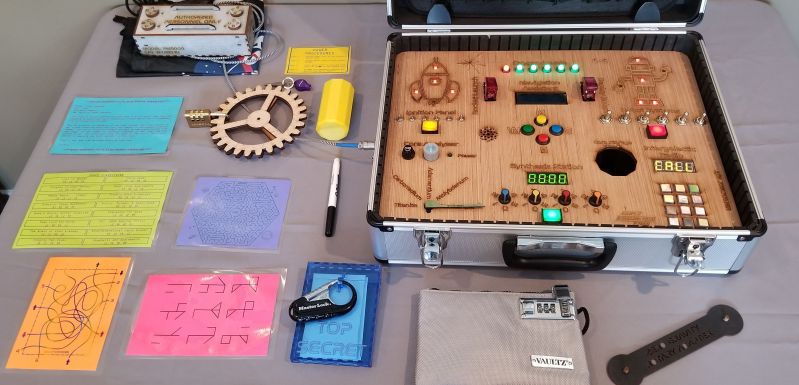The trick to a fun escape room is layers. For [doktorinjh]’s Spacecase, you start with an enigmatic aluminum briefcase and a NASA drawstring backpack. A gamemaster reads the intro speech to set the mood, and you’re ready to start your escape from the planet. The first layer is the backpack with puzzles you need to solve to get into the briefcase. In there, you discover a hidden compartment and enough sci-fi references to put goofy smiles on our faces. We love to see tools reused as they are in one early puzzle, you use a UV LED to reveal a hidden message, but that light also illuminates puzzle clues later.
All the tech in Spacecase makes it a wonder of mixed media. The physical layer has laser engraved wood featuring the font from the 1975 NASA logo, buttons, knobs, LEDs, toggle switches, and a servo. Beneath the visible faceplate is an RGB sensor, audio player, speaker, and at the center is an Arduino MEGA. We’d love to get our hands on Spacecase for a game, and we’re inspired to pull out all the stops and build games with our personal touches. Maybe something with a mousetrap.
This isn’t the first escape room hardware we’ve seen and [doktorinjh] similarly made a bomb diffusing defusing game.
















Love the idea! Commercial puzzle-boxes need more interesting tech.
It should be bomb *defusing*, since diffusing a bomb is spreading it around the room.
Diffusing sounds a bit like a bomb’s intended purpose.
that would be rapid disassembly
Thank you. I really needed the laugh you just gave me
Thank you for *fussing* about my spelling. I corrected it.
How can I get the game? Thinking in my high school teens!
Cistercian monks in space! (pink card )
It looked like a fun, alien code. Those monks get around!
I can see that this would be fantastic for STEM if it were modularized, documented, and “open sourced”.
Creating a “game” sequence by a group of students can be done without necessarily having them do the electronics. Other groups could individually make modules that work from one sequence to the next.